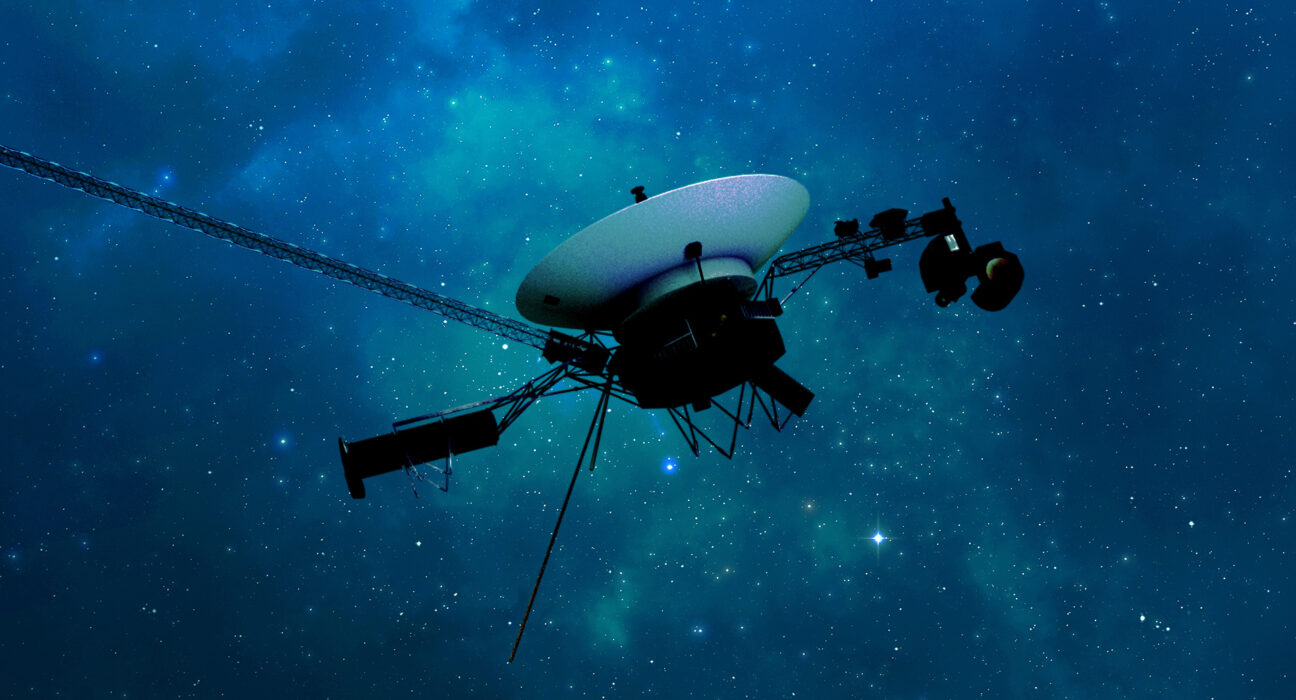Voyager 1, a name that echoes through the corridors of space exploration, represents one of humanity’s most ambitious endeavors. Launched on September 5, 1977, by NASA, this spacecraft was designed to explore the outer planets and has since journeyed beyond the confines of our solar system. As we delve into the incredible story of Voyager 1, we’ll uncover its mission, achievements, and the invaluable knowledge it has brought back to Earth.
The Birth of Voyager 1
A Visionary Mission
The idea behind Voyager 1 was born out of the desire to learn more about our solar system. NASA wanted to take advantage of a rare planetary alignment that occurred in the late 1970s. This alignment allowed for a gravitational assist, which meant Voyager 1 could visit multiple planets with minimal fuel usage.
Construction and Launch
- Design and Development: Voyager 1 was built at NASA’s Jet Propulsion Laboratory (JPL) in Pasadena, California. It was engineered with an array of scientific instruments designed to gather data on the planets it would encounter.
- Launch Vehicle: The spacecraft was launched aboard a Titan IIIE rocket, a powerful vehicle that propelled Voyager 1 into its destined orbit.
A Historic Journey Begins
From the moment it left Earth, Voyager 1 embarked on a journey that would last decades. Traveling at speeds of over 38,000 miles per hour, the spacecraft quickly made its way through the inner solar system, gathering crucial data along the way.
The Journey to the Outer Planets
Close Encounters with Giants
Voyager 1’s mission was centered around flybys of the gas giants: Jupiter and Saturn. Each encounter provided scientists with unprecedented data.
Jupiter Flyby
- Date: March 5, 1979
- Key Discoveries:
- Atmosphere: Voyager 1 revealed details about Jupiter’s atmosphere, including its Great Red Spot, a massive storm larger than Earth.
- Moons: The spacecraft discovered several new moons, including Io, Europa, Ganymede, and Callisto. Each of these moons has unique characteristics and has since been the focus of much scientific inquiry.
Saturn Flyby
- Date: November 12, 1980
- Key Discoveries:
- Rings: Voyager 1 provided the first detailed images of Saturn’s rings, showcasing their intricate structures and composition.
- Titan: The spacecraft discovered that Titan, Saturn’s largest moon, has a thick atmosphere, making it a prime candidate for future exploration.
Beyond the Gas Giants
After its encounters with Jupiter and Saturn, Voyager 1 continued on its trajectory toward interstellar space. The spacecraft’s instruments continued to gather data, sending information back to Earth.
The Journey into Interstellar Space
Crossing the Heliosphere
Voyager 1’s journey took it beyond the heliosphere, the bubble of solar wind that surrounds our solar system. In August 2012, it officially crossed into interstellar space, making it the first human-made object to do so.
- Significance: This milestone is monumental, as it allows scientists to study the environment outside of the solar system. The data collected helps us understand cosmic rays and the interactions between solar wind and interstellar space.
Current Status and Distance
As of now, Voyager 1 is over 14 billion miles from Earth, traveling further away every day. Despite its vast distance, the spacecraft continues to communicate with mission control, sending back valuable data about the interstellar medium.
- Communication Delay: Signals from Voyager 1 take over 22 hours to reach Earth, highlighting the immense distances involved.
Scientific Contributions of Voyager 1
Valuable Data Collected
The scientific instruments aboard Voyager 1 have contributed significantly to our understanding of the solar system and beyond. Here are some of the key areas of research:
- Planetary Science: Data from the gas giants provided insights into their atmospheres, magnetic fields, and numerous moons.
- Cosmic Rays: Voyager 1 measures cosmic rays, helping scientists understand their origins and the effects they have on both space and Earth.
- Magnetic Fields: The spacecraft has provided data on the magnetic fields of the planets it encountered, contributing to our knowledge of planetary science.
Golden Record
In addition to scientific instruments, Voyager 1 carries a unique artifact: the Golden Record. This phonograph record contains sounds and images intended to represent the diversity of life and culture on Earth.
- Contents of the Record:
- Music: Selections from various cultures and eras.
- Greetings: Spoken greetings in multiple languages.
- Images: Photographs depicting human life, animals, and landscapes.
The Golden Record serves as a time capsule, a message in a bottle cast into the cosmic ocean, meant for any intelligent life that might encounter Voyager 1 in the distant future.
The Legacy of Voyager 1
A Symbol of Exploration
Voyager 1 embodies humanity’s relentless quest for knowledge. Its journey demonstrates our capability to explore the unknown and expand our understanding of the universe. The data and insights gleaned from Voyager 1 have paved the way for future missions, inspiring generations of scientists and explorers.
Continuing Influence on Science and Technology
The technological innovations developed for Voyager 1 have had far-reaching impacts on various fields. Many of the systems and instruments designed for the spacecraft have found applications in other areas of science and technology.
- Robust Engineering: The engineering challenges faced during the Voyager missions have led to advancements in spacecraft design and reliability.
- Data Transmission: The methods used to transmit data over vast distances have influenced telecommunications and satellite technology.
Future of Voyager 1
Even as Voyager 1 continues its journey through interstellar space, the mission is slowly winding down. The spacecraft relies on a finite power source, and as its power diminishes, some instruments will be turned off to conserve energy. However, the legacy of Voyager 1 will endure.
- End of Communication: Experts predict that communication with Voyager 1 will continue until around 2025, after which it will remain silent, a solitary traveler in the vastness of space.
Conclusion
Voyager 1 is not just a spacecraft; it’s a testament to human ingenuity, curiosity, and the desire to explore the cosmos. Through its incredible journey, it has provided us with a treasure trove of knowledge about our solar system and the universe beyond. As it drifts further into the unknown, Voyager 1 serves as a reminder of our place in the universe and the limitless possibilities that await those who dare to explore.
In the grand tapestry of space exploration, Voyager 1 shines as a beacon of hope and discovery, forever expanding our understanding of the cosmos. Its story continues to inspire and ignite the imaginations of scientists and dreamers alike, proving that with determination and creativity, we can reach for the stars.
Voyager 1 remains a cornerstone of space exploration, and its contributions will resonate for generations to come. Whether you’re a seasoned astronomer or a curious student, the story of Voyager 1 invites you to ponder the mysteries of the universe and our role within it.








Leave feedback about this